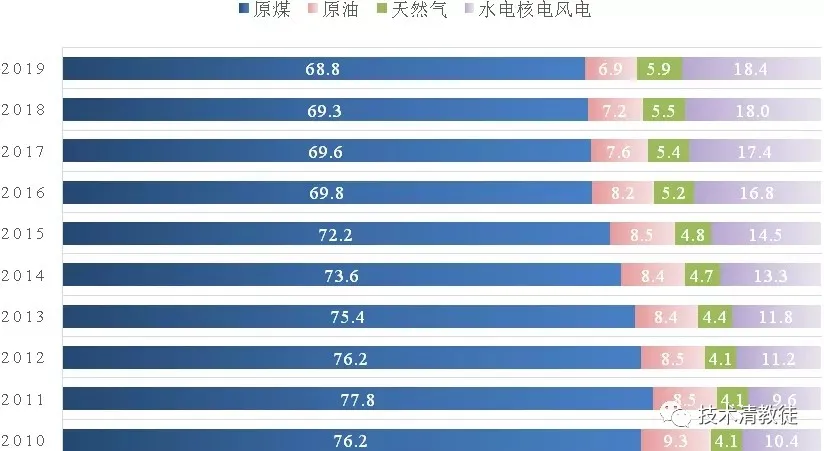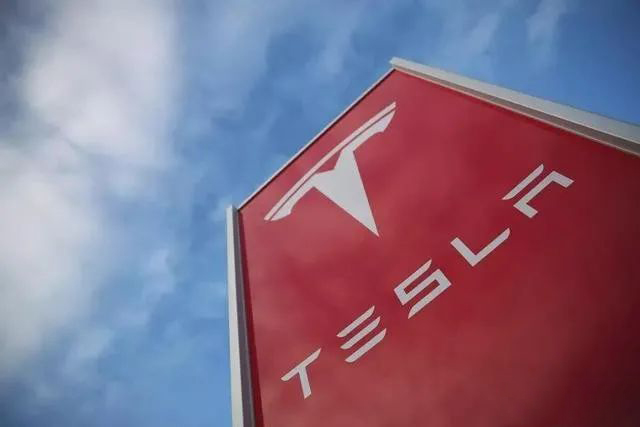Most of the previous articles discussed why Tesla achieved its success, Tesla’s long-term core values, and Tesla’s future potential. Today, we will shift our focus to a broader perspective and talk about the overall environment in which Tesla operates.
Not long ago, Akio Toyoda from Toyota gave a statement to the media, suggesting that Tesla’s promotion of global clean energy through electrification of automobiles is a false premise. According to him, although electric cars do not produce tailpipe emissions, the production of electricity still relies on burning fossil fuels, and pollution has not decreased in reality.
This statement makes sense in Japan and China today. However, it may not be correct in tomorrow’s China although it may still be valid in Japan. Why is that?
First, let us take a look at the current energy production structure. In Japan’s 2018 energy production structure, coal, natural gas, and oil accounted for 88%, while hydro, nuclear, wind, and solar energy accounted for 12%. In China’s 2019 energy production structure, coal accounted for 68.8%, oil accounted for 6.9%, and natural gas accounted for 5.9%, while hydro, nuclear, wind, and solar energy accounted for 18.4%.
Looking at today’s situation, coal, oil, and natural gas dominate power generation in Japan and China, and the combustion of coal and oil produces a large amount of pollution. Although natural gas does not produce pollution, it is also unsustainable fossil energy.
Therefore, Toyoda’s statement makes sense today. However, we do not base our decisions solely on the present, but we also look to the future.

This chart shows the changes in China’s energy production structure from 2010 to 2019. We can see that the proportion of high-pollution fossil energies such as coal, oil, and natural gas is gradually decreasing, while the proportion of clean energy such as hydro, nuclear, wind, and solar energy is gradually increasing. Data shows that China’s clean energy is developing rapidly, and due to China’s vast territory, there are still many places suitable for the development of clean energy such as hydro, nuclear, wind, and solar energy. Therefore, in the future, there should be good growth potential for clean energy in China’s energy production structure.
Therefore, Toyoda’s statement may not be correct in tomorrow’s China.But this statement may still hold true if said tomorrow in Japan. Land resources are extremely scarce in Japan and do not provide the basis for large-scale development of hydropower, wind power, and solar energy. Nuclear power, which was originally an important part of Japan’s energy production structure, has faced tremendous opposition from the public following the Fukushima nuclear power plant accident, leading the Japanese government to repeatedly reduce the planning of nuclear power plants. It seems that it will be difficult for nuclear energy to become a clean energy seed player in Japan’s energy production structure. History has once again played a joke on Japan, which already had an exceptionally scarce natural resource.
Akio Toyoda’s statement not only reflects the current situation, but also expresses his complaints about the energy production structure deadlock that Japan seems to have fallen into. Perhaps he is not pessimistic about the new energy industry, but his country, Japan, is having a hard time achieving true “new energy” transformation.
Therefore, different people’s statements need to be understood in the context in which they are made in order to truly understand their motives.
After discussing Akio Toyoda’s concerns about Japan, let us return to the era itself of electric vehicles and take a look at the background of this industry in China.
In 2019, the number of cars owned in China ranged from 200 million to 300 million. Although the data on the exact number of cars owned in China is not consistent, this range gives a rough idea of the numbers and does not affect the subsequent data analysis. Such a huge number of cars require the consumption of nearly 7 trillion tons of crude oil and petroleum products each year. More than half of these resources are used for transportation, while the other half is used for energy production and raw material production. Of the 7 trillion tons of crude oil and petroleum products, self-produced oil accounts for less than 30%, or about 2 trillion tons. Imported crude oil and petroleum products account for more than 70%, or about 5 trillion tons. In terms of money, more than $240 billion in foreign exchange is used to import crude oil and petroleum products every year, of which over $170 billion worth of imported crude oil and petroleum products are used for transportation.
Against this backdrop of energy structure, the electrification of automobiles can first reduce China’s dependence on imports of crude oil and petroleum products for transportation. For instance, imagine that the geopolitical situation in the main oil-producing region in the world – the Middle East – becomes unstable and may lead to a shortage of oil supply. Since the delicate political balance in different regions of the world has been controlled by the United States since World War II, if China relies on oil supply from the Middle East, it is like putting the switch valve of oil supply in the hands of the United States. When the tensions between China and the US escalate, it may indeed face problems with the stability of oil supply. Therefore, the electrification of automobiles is one of the cores for China to achieve energy security strategy by reducing dependence on the import of crude oil.
Having addressed the issue of determination for electrification, let us now examine exactly how much electricity is needed once electric vehicles are put into effect.The number of electric vehicles in China was about 3 million at the end of 2020, assuming that each vehicle travels 18,000 kilometers per year, or about 50 kilometers per day, requiring 7.8 billion kWh of electricity. China’s total electricity consumption in 2019 was about 7,000 billion kWh, and the electricity consumption of electric vehicles accounted for about 0.1% of the total electricity consumption.
Assuming that according to the New Energy Vehicle Plan of China, new energy vehicles will account for 25% of new car sales by 2025, approximately 7.5 million new energy vehicles will be added in that year. At the same time, to simplify the calculation, assuming that the new energy vehicle sales growth from 2020 to 2025 are: 2 million, 3 million, 4 million, 5 million, 6 million, and 7.5 million. By the end of 2025, the number of new energy vehicle ownership is about 28.5 million, accounting for 10-15% of the total number of vehicles.
Therefore, it can be speculated that by the end of 2025, the total energy consumption of new energy vehicles will be about 74 billion kWh, accounting for 1% of the total electricity consumption, and reducing crude oil imports worth about 17-25.5 billion US dollars per year. It seems that the impact of electric vehicles on the power grid is much smaller than expected, accounting for only 1% of the total electricity consumption in 2025. Moreover, based on China’s energy production growth data, this increase in electricity demand can definitely be met by renewable energy.
From a business perspective, is it sustainable? Can we invest the saved foreign exchange for reducing crude oil imports in renewable energy?
As the cost of power plants and power transmission equipment is not yet known, positive calculation may be complex and far from the actual situation. Here is a reverse calculation. According to the national electricity price of 0.6 yuan/kWh, which should include the cost of power generation, transmission and distribution, the coverage of 74 billion kWh of new electricity demand requires approximately 45 billion yuan, while the saved foreign exchange is about 110.5 billion – 165 billion yuan. From this point of view, even if the country does not want to “subsidize” the project, just using the “robbing Peter to pay Paul” model to add new power generation, transmission and distribution facilities should be enough to form a commercially sustainable closed loop. Sustainable development is not an unattainable goal.
Therefore, Tesla’s slogan “accelerating the world’s transition to sustainable energy”, when applied to China, not only satisfies the energy security strategy and achieves truly clean energy, but also forms an efficient business closed loop, which is truly a triple win.
Before the tide, we are all small. Perhaps this is the tide of this era, the prelude to the great energy revolution.
“If you are offered a seat on a rocket ship, don’t ask what seat, just get on it.”
This article is a translation by ChatGPT of a Chinese report from 42HOW. If you have any questions about it, please email bd@42how.com.
